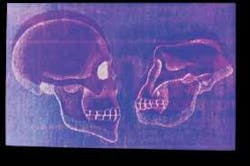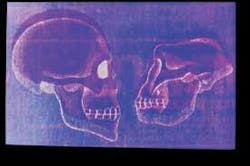Be Somebody!
Accreditation in cosmetic dentistry means credibility.
by Jeff Morley, DDS, FAACD
These days it seems there is a cosmetic dentist on every corner. Informal surveys point to four primary reasons for this phenomenon:
First, most restorative dentistry done today has some cosmetic component to it. Whether it is tooth-colored fillings, veneers, porcelain crowns or even bleaching, there is a lot of cosmetic dental treatment being done.
Second, patients want cosmetic dentistry. Like it or not, the prospect of a good-looking, or even normal smile, is a powerful motivator. Most dentists wish that good oral health was higher on their patients’ priority list; however, even health-conscious patients want attractive smiles.
Third, cosmetic dentistry is a profit center in the practice.
Finally, cosmetic dentistry is rewarding for the staff, patient, and doctor.
Dentists who perform cosmetic procedures should wonder how patients decide among the many dentists who promote and provide these services.
How do patients find a cosmetic dentist?
It happens in several ways:
You are already a dentist for many patients. This group is your primary source. They know you, they like you (hopefully), and they trust you. Yet, as unbelievable as this sounds, many dentists are low-key about letting their patients know they perform cosmetic dental procedures. Thus, many of these dentists’ patients move to a “real cosmetic dentist” (whatever that means) when they have a cosmetic concern.
- The Internet. Like it or not, the Internet has become the No. 1 source for finding information about everything.
Let’s experiment. Put this article aside and sit down at your computer. Next, go to Google and type in the words “cosmetic dentistry.”
This is what patients see! If your name is on the screen, congratulations. As a result, your office phone is probably ringing. However, if you do not see your name on the computer monitor screen, you are in good company. Some 99.7 percent of practicing dentists do not spend the money or have an interest in developing an Internet presence. That’s OK.
There are alternatives to spending lots of money on self-promotion on the Internet. Check out your computer screen again. On the first page you should see ... The American Academy of Cosmetic Dentistry. This could become your top source for exposure and referrals in cosmetic dentistry. We’ll talk more about this later.
- Word of Mouth. Yes, this still happens quite a bit - no matter what the high-powered marketing pundits would like us to believe. If you successfully perform cosmetic dentistry in your practice, some of your patients will tell other people. Fortunately, some things never change.
- Marketing. There is no end to what you can do and how much you can spend whether it be with TV, magazines, radio, value pack coupons, mailers, or sky-writer airplanes. You name it, and somebody does it. Does this type of marketing work? It must or dentists would not spend the money.
What do patients want from a cosmetic dentist?
In a word, patients want to be happy. They want to be happy with the results. They want to be happy with how they feel. They want to be happy with how long a procedure lasts. They want to be happy they spent the money. But the trick for potential patients is how they might predict their happiness before they call an unknown dental office for an appointment.
Credentials are becoming more and more important in the selectioin of a cosmetic dentist. There are thee primary forms of credentials in cosmetic dentistry:
- Passing tests
- Training
- Awards
Working backwards, dentistry does not yet have publicly recognized awards, so winning awards does not help the vast majority of dentists. Training, on the other hand, is something in which most dentists take pride. As a dental educator for more than 25 years, I believe that postgraduate education in cosmetic dentistry, occlusion, communication skills, or any other dental discipline is critically important for success. Dentists gain information, knowledge, and increased clinical judgment by pursuing directed, quality continuing education from credible clinicians.
But of all the possible credentials that could bode well for future performance, I believe the single most credible asset a dentist can possess is passing nationally and internationally accepted tests. Would any patient go to a dentist who had not passed his or her regional board exam? Of course not. This may sound like a silly question because dentists who have not passed licensure exams are not allowed to practice dentistry. But what about cosmetic dentistry? A dentist does not need to pass exams in cosmetic dentistry to practice cosmetic dentistry.
Is there a nationally recognized exam in cosmetic dentistry?
The Accreditation exams administered by the American Academy of Cosmetic Dentistry are the only exams that credibly determine performance standards in cosmetic dentistry. When dentists achieve AACD Accreditation, it shows that they have superior knowledge and have performed cosmetic dental procedures at the highest level.
What makes the AACD Accreditation credential known and accepted worldwide? For starters, this credential has been around for more than 20 years. It is a fair, nonpolitical group of tests that can be earned by virtually any dentist who is dedicated and has an interest in cosmetic dentistry.
How AACD Accreditation works
The process starts by taking a written exam. The written exam covers general topics in smile design, adhesion technology, restorative materials, and restorative procedures. The AACD provides many useful aids in helping dentists pass the exam. Workshops are offered at AACD annual meetings and around the country (SFI will be hosting an event in Park City, Utah, this September).
Guides to courses useful in passing Accreditation are also available. Dentists can find sample test questions to help prepare for the written exam. Check out www.aacd.com for up-to-date information. There are currently 800 dentists who have passed the written exam and are participating in the Accreditation process.
The next step toward achieving AACD Accreditation involves submitting images of five specific cases that demonstrate common cosmetic dental procedures. Cases include indirect restorations such as veneers and crowns, and bonding and replacing an anterior tooth. Cases can be submitted individually, or in groups, depending on when the dentist can prepare the documentation.
The AACD Web site lists specific criteria for each case. There is a booklet that shows pictures and diagrams of successful and unsuccessful cases. The designation “Accreditation Candidate” is awarded to individuals as soon as they pass one of the five clinical cases. The distinction of Accreditation Candidate moves these individuals up a rung in credibility on the AACD’s Web site listing.
There is no particular rush to get the cases done. Most dentists finish the five cases in two to three years. Once all cases are passed, the dentist has the distinction of being an Accredited member. Approximately 260 dentists in the world are Accredited members, with more dentists achieving this credential annually.
Real credibility in cosmetic dentistry
Think of what AACD Accreditation could do for you and your practice. Given the choices for making a positive statement about your skills in your community, becoming Accredited is a great way to demonstrate proficiency and excellence in cosmetic dentistry. Since 1986, AACD Accreditation has been the only credential in cosmetic dentistry. Every month, tens of thousands of potential patients rely on www.aacd.com for referrals to an Accredited dentist. You could be one of those dentists.
Jeff Morley, DDS, co-founded the AACD in 1984. Since 1989, he has directed and taught more university-based esthetic postgraduate continuing education programs than any other dentist in the world. He served as editor of the Journal of Cosmetic Dentistry, associate editor of the Journal of the American Dental Association and is currently ADA spokesperson on cosmetic dentistry. Reach Dr. Morley at [email protected].

